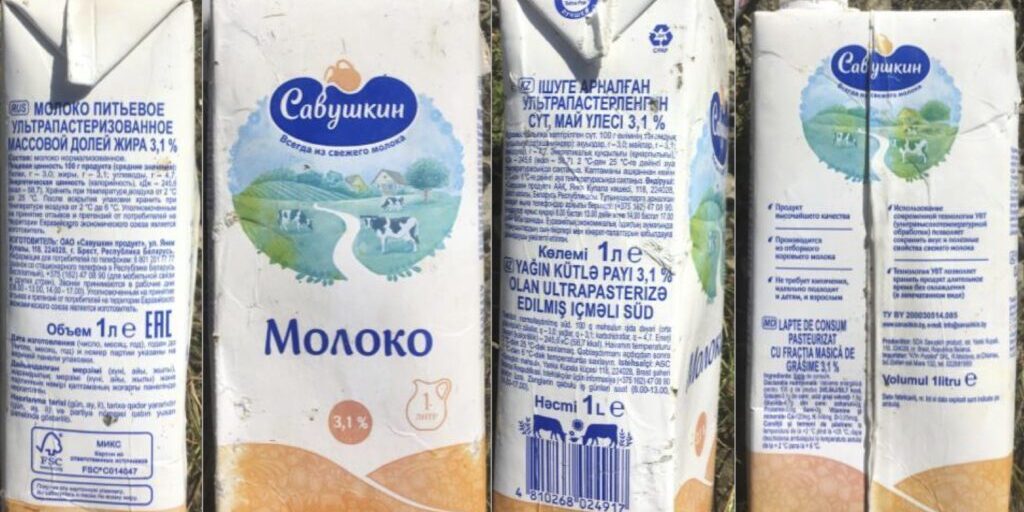An influx of empty bottles and potentially hazardous marine debris have washed up in communities across the Bering Strait region. The consensus from those involved in the cleanup process is that the debris is coming from the other side of the Strait.
Robb Kaler, a biologist with the U.S. Fish and Wildlife Service, recently shared a collection of reports and observations from at least five different communities in the Bering Strait region. Those include Diomede, Wales, Shishmaref, Gambell, Savoonga, Unalakleet, and Nome. All of them saw unusually high amounts of marine debris and trash, found along the beaches of Western Alaska.
“A lot of water bottles, but some of it Butane, some of it penetrating oil, really not good things. And you can see that the writing is not U.S. writing on these. So that increased vessel traffic, I think it’s important to somehow outreach and make sure they understand that our folks that are fishing on the other side of the [Bering Strait], that they know not to be dumping.”
– Robb Kaler
Some of those reports came from regional residents like Erika Apatiki of Gambell. She picked up marine debris with her mother on August 3rd near an important subsistence area.
Apatiki says she has seen some trash wash up on the coast of Gambell before, but not on this scale.
“It’s actually pretty heartbreaking, especially since we see on the media that the whales are dying…from plastic pollution, all over the world.”
– Erika Apatiki
After one day of picking up trash on a 3-mile stretch of beach, Apatiki filled up roughly 19 40-gallon trash bags.

Apatiki mentioned she saw the beach was mostly littered with blue plastic wrappings for filleted fish, with words written in a foreign language on them; potentially Russian or Korean.
Then in Nome, Austin Ahmasuk of Kawerak collected a sizable amount of trash on his own earlier this summer. Ahmasuk preferred not to comment for this story, but Gay Sheffield with Alaska Sea Grant summarized his efforts and observations from his time traveling in the Nome area.
“So Austin went from Sinuk River back to Nome and had 124 different items [in total]. He picked up about 75 that he had in trash bags, and we went through each one… it was shocking.”

When looking at vessel traffic in the Bering Strait recently, there have been significantly more fishing vessels and tankers traveling along the coast of Eastern Russian than there are in Western Alaska. Kawerak Inc. believes the increased vessel traffic is at least partially to blame for the influx of marine debris.
In the tribal consortium’s letter to the U.S. Coast Guard, Kawerak said, “residents in our communities have taken it upon themselves to become first responders and despite efforts to reach out to the National Oceanic and Atmospheric Administration’s (NOAA) Marine Debris program, and the U.S. Coast Guard, it seems as though responding to this event has not been adequate to meet our concern and we are having to bear the cost of cleaning our shores ourselves.”
Jacob Martin, the Tribal Resources Director with Nome Eskimo Community (NEC), has been facilitating a beach cleanup program every summer since 2017. Martin says the program is funded through an EPA IGAP grant and with that support they’re able to cleanup mostly local and close recreational areas around Nome, the Nome River and various beaches. He noted that NEC only found one bottle with foreign writing on it this year, and the amount of trash seems to have slightly declined this summer compared to previous years. However, Martin also points out that more members of the public have picked up trash recently and they could have found collected other items.
Peter Murphy is the Alaska Coordinator for NOAA’s Marine Debris program. He says the network of agencies and individuals involved in responding to the recent marine debris in the region is still gathering more information to determine the source of the trash. However, Murphy suspects this is related to a point-in-time release of a large amount of debris, in one place at one time.
“A lot of what we’re seeing in this pulse right now, that’s been reported, are relatively really fresh items. So, the labels are clear, the writing is clear, they aren’t weathered. Whereas the items that would’ve come from previous events or just what is unfortunately, chronic every day debris that’s already out in the ocean and circulating, that’s going to look different. It’s going to be more faded, it’s going to be harder to distinguish.”
Kawerak, along with several communities in the Bering Strait region, have urged the Coast Guard to investigate the source of this marine debris and enforce national and international rules governing the dumping of plastics into the world’s oceans.
If you would like to report foreign trash or various marine debris found in the Bering Strait region, call Gay Sheffield at 907 434-1149. According to Murphy, there will be a presentation or opportunity for regional communities to engage with NOAA’s Marine Debris Program [peter.murphy@noaa.gov] on this topic in the near future.
Image at top: Some of the empty bottles and trash that washed up in the Bering Strait Region within the last few weeks. Photo taken by Austin Ahmasuk, shared by Gay Sheffield with Alaska Sea Grant (2020).




